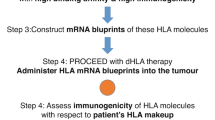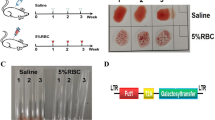Abstract
In haemagglutination tests we have found that the monoclonal antibody B5 discriminates between erythrocytes from patients with malignant cancer (total 386; greater than 80% B5 positive) and individuals with no known tumour (total 247; less than 20% B5 positive). The B5 antigen detected on intact erythrocytes is a tightly bound surface component which does not appear to be derived from the plasma. The B5 antigen is not T, Tn, Ca1, CEA or the Forsmann antigen, nor is it related to any of the major blood group antigens. Abnormal levels of surface B5 are found on erythrocytes from patients with a great diversity of tumours and this fact presents B5 as an indirect marker of malignancy. Successful eradication of tumour is associated with a switch from positive to negative B5 haemagglutination. We believe that B5 is a valuable addition to the few useful tumour markers already employed for monitoring tumour status.
This is a preview of subscription content, access via your institution
Access options
Subscribe to this journal
Receive 24 print issues and online access
$259.00 per year
only $10.79 per issue
Buy this article
- Purchase on Springer Link
- Instant access to full article PDF
Prices may be subject to local taxes which are calculated during checkout
Similar content being viewed by others
Rights and permissions
About this article
Cite this article
Metcalfe, S., Milner, J. & Svvennsen, R. A new indicator of human malignant tumour. Br J Cancer 49, 337–342 (1984). https://doi.org/10.1038/bjc.1984.53
Issue Date:
DOI: https://doi.org/10.1038/bjc.1984.53



